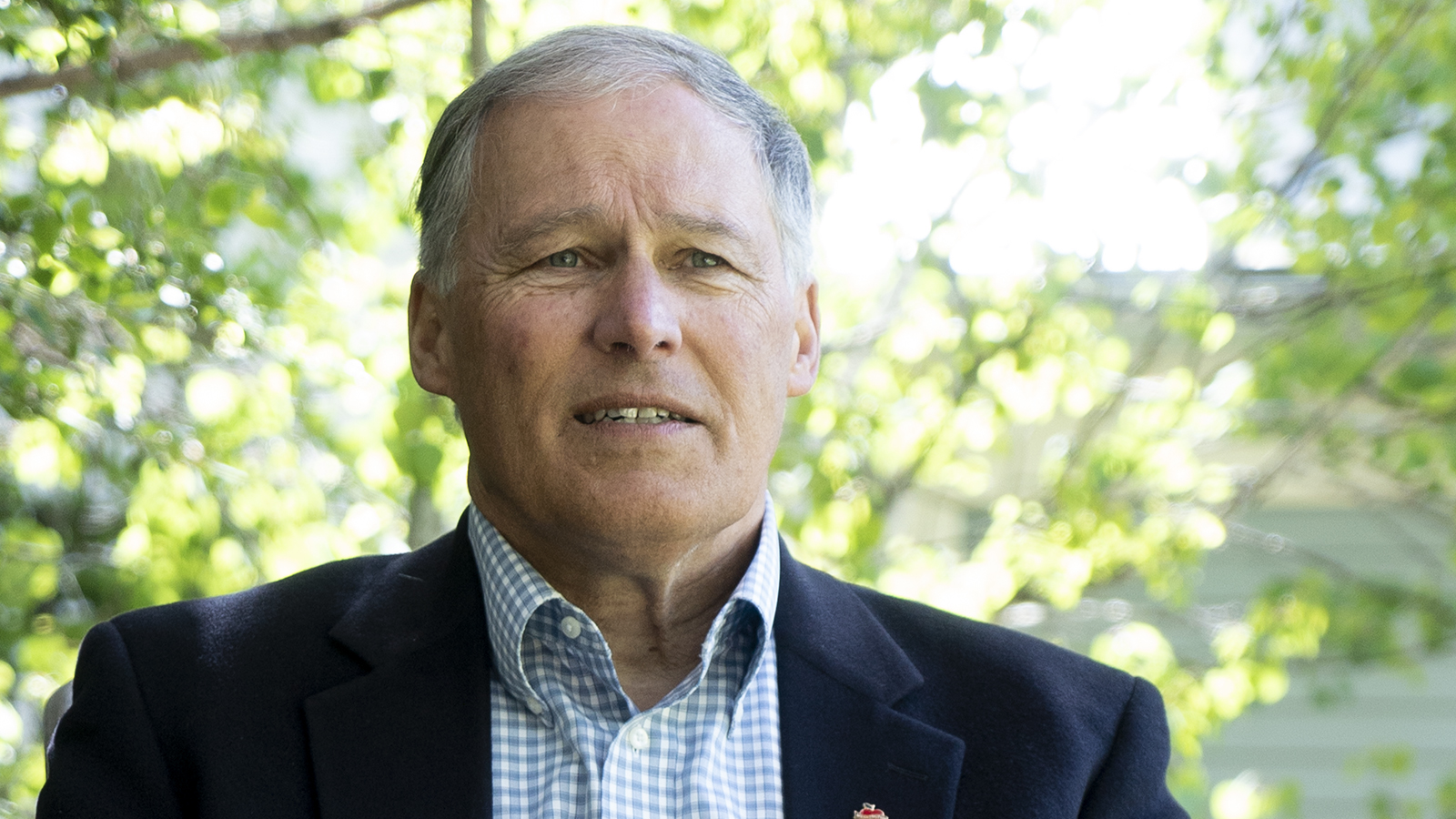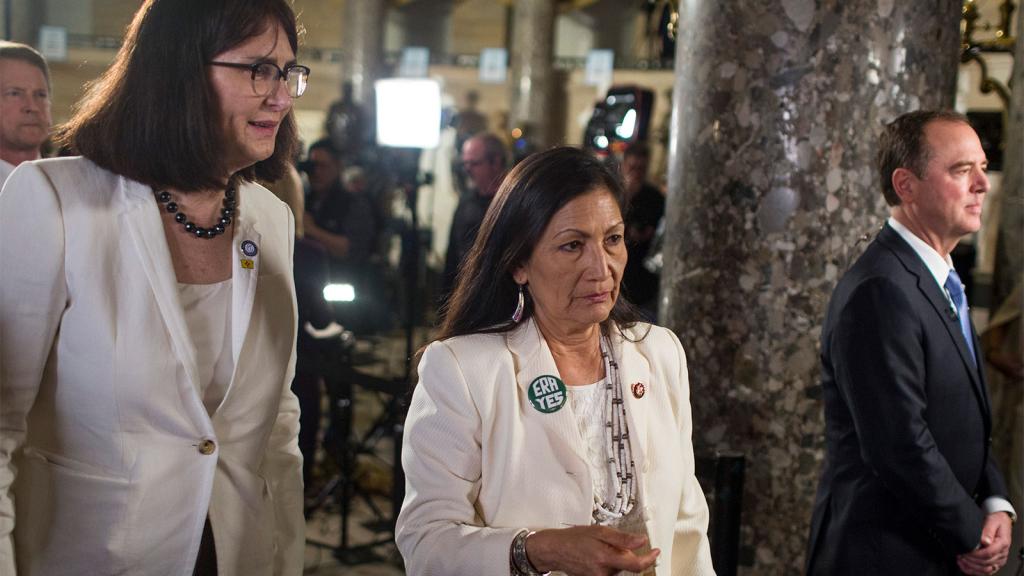The little-known governor of Washington state just unveiled the ambitious second phase of his climate plan, and there are more pieces of the puzzle to come. That’s no surprise to those familiar with his platform: Jay Inslee is running as the climate candidate.
Some of Inslee’s fellow presidential candidates have embraced a progressive climate plan called the Green New Deal. A resolution outlining that plan, introduced by Representative Alexandria Ocasio-Cortez and Senator Ed Markey, points to some vague and rather massive policy ideas. But AOC’s policy plan isn’t expected to roll out until next year. Until then, Inslee’s plan is beginning to look like the closest thing we have to a road map.
Much like the Green New Deal, Inslee’s plan (the parts of it we’ve seen so far) offers a federal jobs guarantee, a 10-year mobilization on clean energy, and even healthcare benefits for impacted coal workers. Inslee wants to spur a $9 trillion investment that will fight off the worst of climate change and enable workers to find gainful employment in the transition to renewable energies.
One of the advisors to New Consensus, the think tank building out the Green New Deal, saw positive similarities between the two. “I think what Governor Inslee is doing very well and what the Green New Deal does very well is approach the problem through not only an environmental lens but also an economy lens,” said Brandon Hurlburt, who served as chief of staff to Stephen Chu, secretary of energy under President Obama. “We need people to understand the type of job that they can have in the mobilization effort that Governor Inslee is talking about.”
Inslee isn’t shy about drawing parallels between his plan and the history that inspired the Green New Deal. “Eighty-six years ago this month, President Franklin Delano Roosevelt laid out the details of the New Deal in a radio address,” the first line of Inslee’s plan reads. “Just as it did in the 20th century, America must rise to this 21st-century challenge with a bold plan.”
Here’s how his Evergreen Economy Plan aims to make that happen:
- A $9 trillion investment in infrastructure, labor, green industries, and new technologies. That doesn’t mean that Inslee expects Congress to cough up $9 trillion on his first day in office (the same goes for Beto’s $5 trillion climate plan). The plan leverages money to jumpstart investment: $300 billion in average federal spending plus an additional $600 billion more from the private sector every year.
- A green bank. Inslee calls this the “Clean Energy Deployment Authority” and it’s like an ATM for green spending. The bank will get start off with $90 billion to invest in low-cost solutions that the private sector has been ignoring.
- Helping out rural America. Inslee aims to accomplish this by providing debt relief to struggling communities, starting clean electricity coops, funding energy efficiency upgrades, and investing in regional authorities. It’s a bottom-up plan that lets rural states maintain control of the energy transition.
- Under Inslee’s plan, federal agencies will have to purchase 100 percent clean energy by 2024 using union labor. The plan will also spend $3 trillion on upgrading and building more resilient infrastructure, another opportunity, Inslee says, for good-paying jobs. Some of these skilled-labor positions could clock in at $25 an hour.
- A G.I. bill for workers affected by the transition to renewables, particularly folks employed by the dying coal industry. That includes: securing retirement benefits for impacted workers by stabilizing the nation’s retirement system, guaranteeing access to healthcare for qualifying workers, educational stipends and income support for workers who want to transition to new jobs, and more.
There’s a lot more in Inslee’s plan: a Clean Water For All initiative that invests in upgrading the nation’s crumbling water infrastructure, grants for smart grid networks, investments in public transit systems (helllooooo, MTA). Almost every piece of the Evergreen Economy Plan provides opportunities for thousands of new jobs.
“We need to have a jobs program that makes sure everyone has a shot at these good jobs in terms of training and otherwise,” Inslee told Grist in an interview in April. “When we’re defeating climate change, what we should be doing is increasing economic equality. That’s invested throughout this whole system.”
Unlike many of the now 23 presidential hopefuls, the governor of the Evergreen State actually has some achievements under his belt to point to as he makes a case for why America needs to tackle climate change full-on.
But Inslee is polling at a paltry 1 percent. His involvement in the 2020 presidential race, however, could have the effect of inspiring other, more established candidates to roll out their own climate plans.
New Consensus advisor Hurlburt pointed out that thanks to candidates like Beto O’Rourke and Inslee, voters will have a wide array of choices. “If Democrats are trying to outdo each other by proposing the most ambitious policy to meet the scale of the problem, that’s a good way to start addressing [climate change],” he said.



